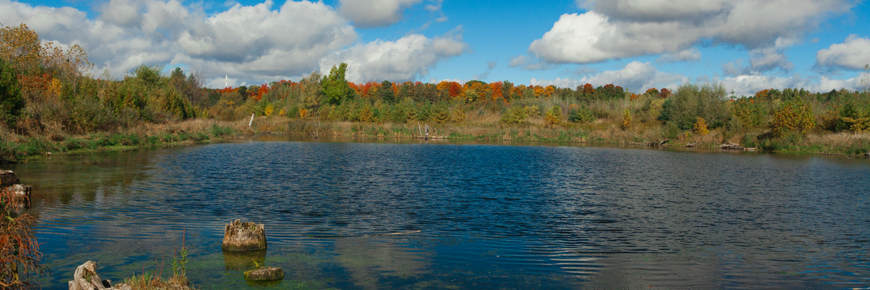
Wetland and stream channel restoration
Rouge National Urban Park
Restoring wetlands and stream channels is an important part of improving ecological integrity in Rouge National Urban Park, and since 2015, Parks Canada has collaborated with park farmers, Indigenous partners, schools, and conservation groups to restore over 70 hectares of wetland, stream and river habitat in the park!
Historically, much of the land in Rouge National Urban Park was dotted with small wetlands and streams. However, as and the Greater Toronto Area developed, many wetlands were drained or filled in, changing how water flows through the landscape. Wetlands serve many important functions, including providing habitat for wildlife, filtering contaminants, capturing carbon, and storing water during times of drought. Restoration efforts in the park are helping to return these areas to a more natural state.
Restored wetlands can be found in several areas, including the Bob Hunter and the Beare Wetlands areas of the park. These wetlands are home to a diverse array of plants and wildlife, including turtles, frogs, ducks, and swans. The restored habitats have been carefully designed to support native plants and attract wildlife. For example, the large logs you see in the water are popular basking spots for turtles and frogs to rest and warm up in the sun, while bird boxes or perches placed near wetlands help to attract native birds.
Healthy stream channels are also important, as they help to reduce soil erosion and improve water quality. In the past, many stream channels in the Rouge were straightened to improve drainage. Unfortunately, these straightened stream channels can cause soil to erode more quickly and wash nutrients away before they are used by aquatic plants.
The loss of natural cover and shading provided by streamside vegetation (riparian zones) is also an issue in many areas, as it reduces the amount of cool and cold water habitat for aquatic animals. Some fish, such as the endangered redside dace, require these cool water habitats to survive. Restoring riparian zones by planting native shrubs along streams provides habitat for native cool and cold water fish species and creates a vegetation buffer that improves water quality, prevents excessive runoff, and stabilizes stream banks.
- Date modified :